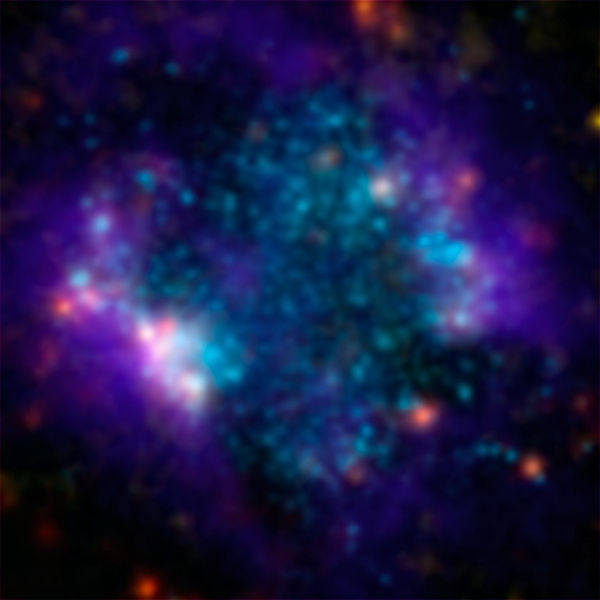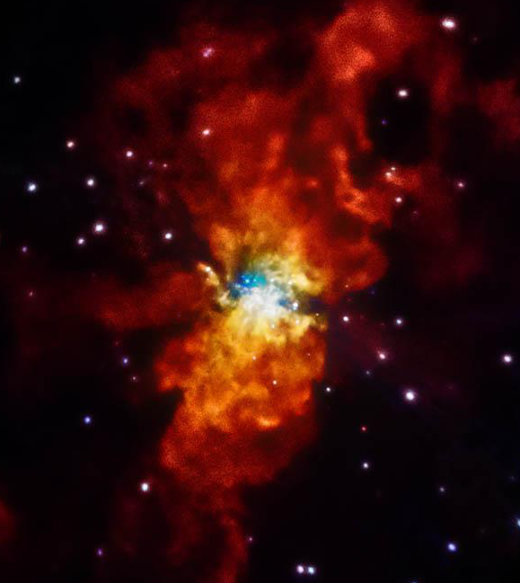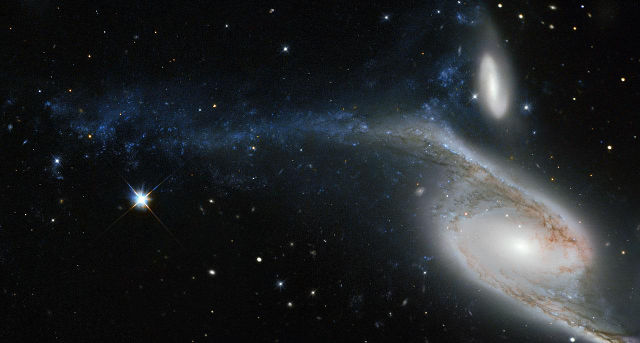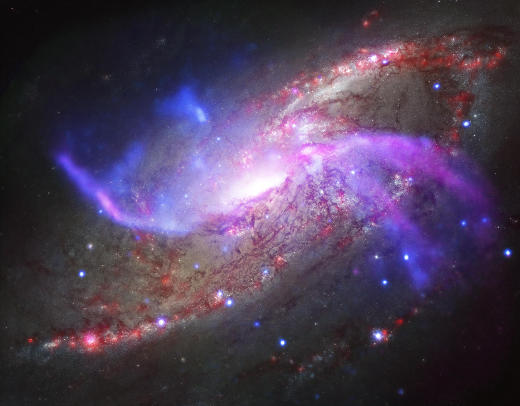
About 4.5 million light-years from Earth in the Sextans constellation lies the small Sextans A galaxy. The above picture is a composite multi-wavelength capture by the ESA’s Herschel space observation mission. In it the purple areas are gases; blue areas represent young stars and the orange and yellow dots are newly formed stars heating up the dust. The environment in the Sextans A galaxy does not feature elements heavier than hydrogen and helium which is considered similar to that of our infant universe because it also lacks in heavy metals.



